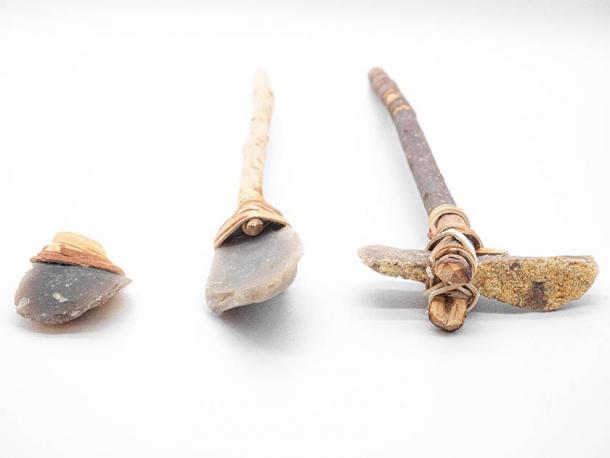
45,000-Year-Old Weapons Discovered In Sri Lankan Cave
Evidence of the earliest use of the bow and arrow by humans outside of Africa has been discovered in Sri Lanka, dating back around 45,000 to 48,000 years ago.
The Upper Paleolithic Period began about 40,000 years ago and was characterized by the emergence of regional stone tool industries in what is now modern Europe, including the Perigordian, Aurignacian, Solutrean, and Magdalenian cultures. However, recent discoveries at this dawn of an epoch confirm that people were building tools to capture fast-moving prey in the rainforest canopies of Sri Lanka, which means humans adapted to extreme environments very quickly when they first migrated to the African continent.

Ancient Rain Forest in Sri Lanka Source: zorgans / Adobe Stock
Older Than Any Similar Weapon Found In Europe
The island of Sri Lanka in the Indian Ocean is home to some of the earliest fossilized Homo sapiens in South Asia. An international team of scientists from Germany, Australia, and Sri Lanka studied artifacts recovered from the cave of Fa-Hien Lena, deep in the heart of the island's wet zone forests, that was once the home of Late Pleistocene humans. Fossilized skeletal remains were discovered in the cave's sediments during excavations in the 1960s and the 1980s and a modern team of scientists have now discovered evidence of the “oldest use of bows and arrows by prehistoric humans outside of Africa,” according to a new paper published in Science Advances.

Replicas of Primal Stone Tools Used by Prehistoric People Konstantin Belov / Adobe Stock
Since the 1980s, the cave of Fa-Hien Lena has become one of south Asia's most important archaeological sites, presenting excavators with “valuable remains of our species, their tools, and their prey in a tropical context,” said co-author Oshan Wedage of the Max Planck Institute for the Science of Human History (MPI-SHH). The evidence of bow-hunting practices, from 45,000 years ago, came in the form of fragments of arrowheads, both single and doubled-pointed bone tools, that scientists suspect were used to kill prey and make use of other natural resources. Crafted from the bones of boar, deer, and primates, these tools are thought to have helped hunters catch rainforest monkeys and squirrels, and the researchers say these arrow fragments are “older than any evidence of similar technology found in Europe.”
- 11 Mysterious Human Species That Most People Don’t Know Existed
- The Stone Age: The First 99 Percent of Human History
- Meet the Half Million-year-old Jungle People of Sri Lanka! The Fascinating Vedda Culture
A Cave of Ancient Survivalists’ Treasures
In addition to the carved bone projectile points, among the other bone artifacts discovered at Fa-Hien Lena cave were “awls, or scraper tools,” which are generally associated with the working of clothes and the preparing of raw fibers for twisting into lines to make fishing nets. Also discovered in the cave were a collection of colored beads produced from mineral ochre and the decorative shell beads, which the scientists believe was likely traded from the coast.
All of the artifacts were examined with a stereo microscope which showed direct traces of their original use along with a series of “fractures” discovered on the points as a result of “high-powered impact,” said lead author Michelle Langley of Griffith University in Queensland, Australia. The only way something could suffer this type of damage in the Upper Paleolithic Period was if it had been shot, or fired with a bow.
Adaptability Is the Key to Historic Human Globalization
According to a Daily Mail article, the study’s co-author, Michael Petraglia, of the MPI-SHH in Germany, said the evidence of “projectile technology, personal ornamentation and long-distance social networks in a tropical rainforest” offers new insights into how early Homo sapiens adapted to diverse, extreme environments as they spread across the globe.
Furthermore, the study provides the earliest evidence of bow and arrow use outside of Africa, dating back 45,000 to 48,000 years ago. What is equally exciting is the discovery of tools required to make yarns, and strings, because it opens up a whole new world of archaeological possibilities, for with strings, a wide range of traps and weapons might have been made and used in ancient Sri Lanka.
Top image: Man using bow and arrow. Credit: Oksana Volina / Adobe Stock
By Ashley Cowie
















Comments
Just because something is shaped like an arrowhead does not necessarily mean it was launched by a bow. It could just as easily have been for a spear, lance, or dart for an atlatl. If they didn’t find a bow – unlikely that one would survive in that location - they shouldn’t assume that it existed.